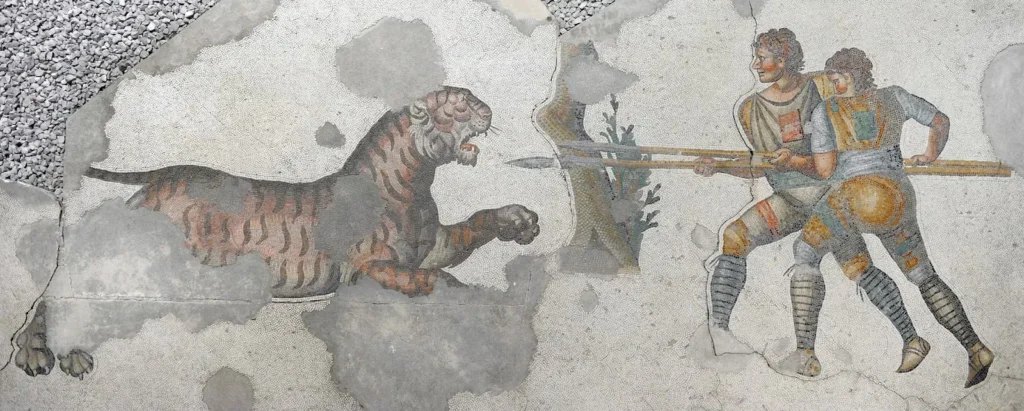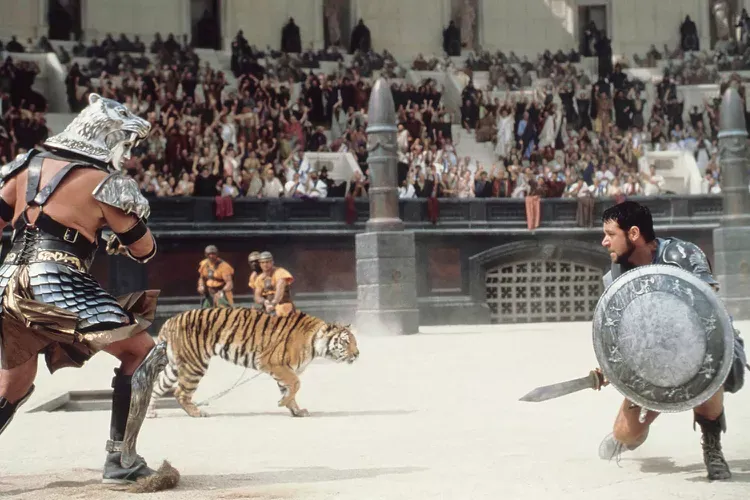Gladiator II: The new “Gladiator II” trailer has sparked a debate over its portrayal of gladiatorial combat, especially with the inclusion of exotic animals like rhinoceroses and sharks. Some view this as creative fiction, but history tells a more fascinating story. This article will explore the true story behind these scenes Gladiator 2, separating fact from fiction. If you’re a fan of “Gladiator,” read on to uncover the truth.
- Shahrukh Khan’s Net Worth in 2024: Income, Business Ventures, and Assets
- Kanye West Net Worth: From $2B to $400M – Analyzing the Rise and Fall
- Blippi Net Worth 2024: Income, Cars, and House of Stevin John
- See Alibaba’s EMO Make History Sing – Better Than Sora!

Exotic Animals in the Colosseum
The Colosseum, Rome’s iconic amphitheater, was renowned for its brutal spectacles, and exotic animals played a pivotal role in these events. While gladiatorial combat often involved human-on-human battles, the Romans also relished the thrill of watching these warriors face off against wild beasts.
Lions, Tigers, and Bears (Oh My!)
Lions, tigers, bears, elephants, giraffes, rhinos – these were just a few of the exotic creatures brought to Rome from far-flung corners of the empire to entertain the masses. These animals were often pitted against gladiators in bloody displays of power and dominance.

Sharks in the Colosseum?
The trailer’s depiction of sharks in a flooded Colosseum has raised eyebrows. While there’s no historical evidence to support gladiators fighting sharks, the Romans did stage elaborate naval battles in the Colosseum. These “naumachiae” involved flooding the arena and using real ships, and while sharks may not have been part of the combat, their presence would have undoubtedly added to the spectacle.
A Costly Affair
Importing and maintaining these exotic animals was a costly endeavor, and not all creatures were created equal in the eyes of the Roman elite. While lions and tigers were considered prestigious, less expensive animals like dogs, stags, bulls, and wild boar were also used in the games.
Gladiator vs. Tiger: A Close Call
Russell Crowe, the star of the original “Gladiator,” famously had a close encounter with a real tiger during filming. This incident highlights the dangers inherent in working with wild animals, even in a controlled environment.

Upping the Ante in Gladiator II
“Gladiator II” promises to up the ante with even more wild beasts in the arena. While this might seem like an exaggeration for dramatic effect, the historical reality of animal combat in the Colosseum suggests that the sequel might be closer to the truth than some might think.
Gladiatorial Games: A Historical Overview
| Period | Type of Combat | Notable Events |
| Early Republic | Mostly human-on-human | Introduction of gladiatorial combat as funeral rites |
| Late Republic | Increased use of animals | Exotic animal hunts become popular, separate from gladiator battles |
| Early Empire | Peak of animal combat | Emperor Titus stages 100 days of games with thousands of animal deaths |
| Late Empire | Decline in popularity | Animal combat becomes less frequent due to economic and ethical concerns |
The Legacy of Gladiator II
While “Gladiator 2” might take some creative liberties with historical accuracy, it serves as a reminder of the brutal and often bizarre spectacles that once entertained the Roman masses. It also highlights the timeless appeal of gladiatorial combat and our fascination with the wild beasts that shared the arena with these legendary warriors.
- Women’s Basketball News: WNBA Rising Stars & Record-Breaking Wins
- Android Feature Drop Tips: Level Up Your Phone with the Latest Upgrades
FAQ Related To Gladiator 2
Yes, historical records indicate that rhinos were among the exotic animals used in gladiatorial combat.
While no evidence suggests gladiators fought sharks, the Romans did stage naval battles in the Colosseum, and sharks may have been present during these events.
Exotic animals were used to entertain the masses, showcase Roman power and dominance, and fulfill a religious obligation to provide spectacles for the gods.









